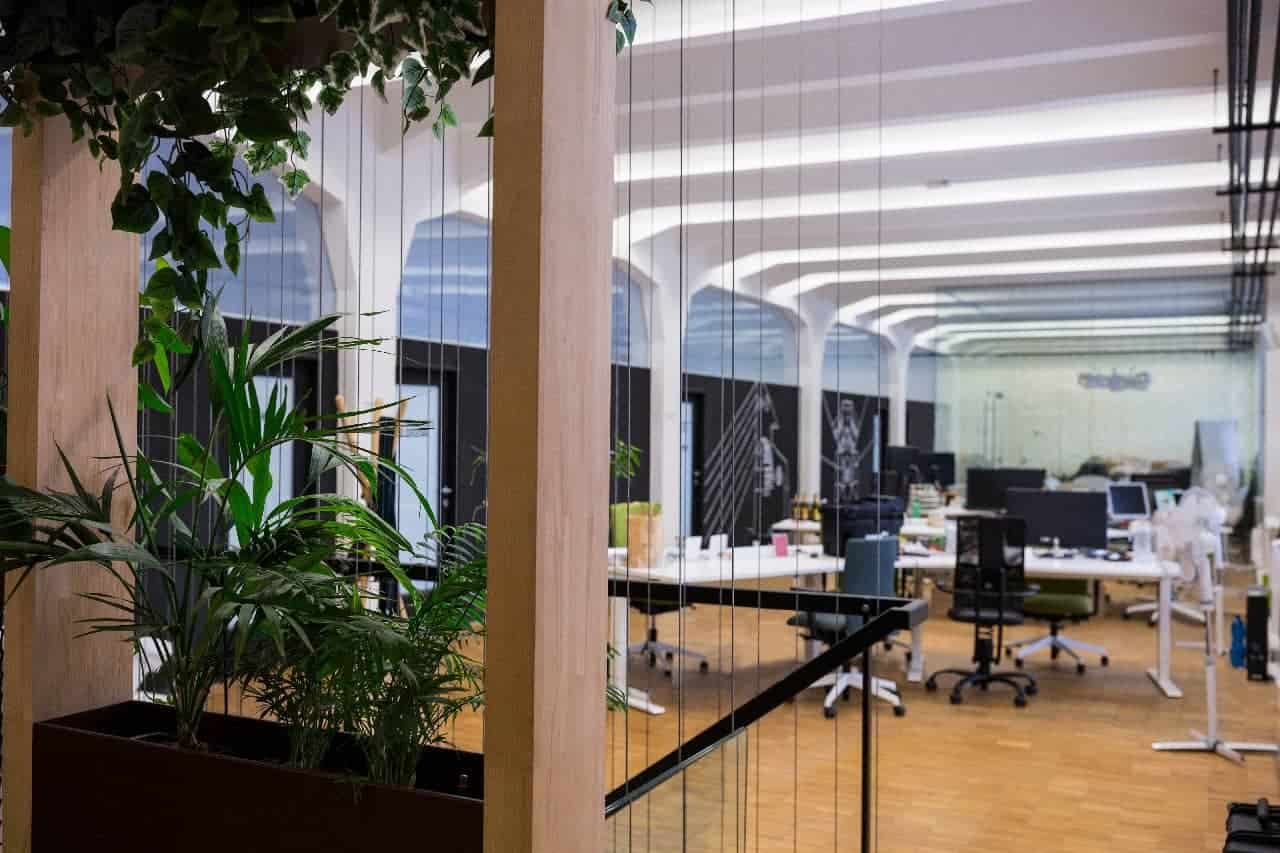When the pandemic hit the country from every direction, most Aussie businesses were forced to adjust to lockdowns and transition to remote work.
In fact, according to research from the Australian Government, Covid-19 forced nearly 40% of workers to experiment with working from home.
Now, as everyday life is starting to return to “normalcy”, only a few businesses want workers back in the office 5 days a week.
Does this mean that traditional 9-to-5 office jobs are at risk of dying out?
The truth? Very much so.
Over the long term, hybrid arrangements may be the only sustainable model for businesses looking to improve employees’ well-being and gain a competitive edge.
In this post, we’ll provide an overview of how the hybrid model works, why it could benefit your business, and how to successfully implement it.
Table of contents:
- Hybrid model: Advantages and challenges of future workplace
- How to successfully implement the hybrid work model
1. Hybrid Model: Advantages and Challenges of Future Workplace

If you’re toying with the idea of running your business from home but are not sure you want to go fully remotely, you may want to shift to hybrid working.
Considered a compromise between the flexibility of fully remote work and on-site work, the hybrid work model has been lifted as the future of workplace thus far.
That said, hybrid work is a relatively new concept that emerged throughout 2021.
While most would assume that a hybrid model is a one-size-fits-all approach, there are actually multiple ways to implement it.
Depending on your business’s size and industry, you can consider one of these categories as a starting point:
- Office-first (or office-based) hybrid model – This is a hybrid model where employees come to the office most of the time but have the flexibility to work from home a few days a week.
- Flexible hybrid model – This working model gives employees the opportunity to choose whether they want to work from the office or elsewhere. While some flexible hybrid models allow employees to juggle home tasks with office work, others may ask employees to decide on one work arrangement and stick to it.
- Partly remote hybrid model – In this hybrid work model, some teams are fully remote while others are required to be physically present in the office.
- Remote-first hybrid model – The remote-first hybrid model means that businesses operate remote-first while still maintaining some office space for occasional in-person meetings.
- Fixed hybrid work model – This is a hybrid work model where companies set the days employees are allowed to work from home (e.g., mandatory work-from-home Fridays).
Hybrid work has grown so much in popularity because it represents a middle ground between traditional work and remote working – which is something employees have always looked for.
In fact, a Harvard Business School survey of nearly 1,500 employees who worked from home from March 2020 to March 2021 found that 81% either don’t want to return to the office or would prefer a hybrid work model, whereas 18% want to return to the office full-time.

Whether you’re just starting to consider hybrid work or have already implemented it, combining remote and office work has the potential to improve your business in several ways:
- Enable team members to become more productive when they work from home, with less time spent commuting
- Reduce office carbon footprint and overhead costs (e.g., rent, electric bills, cleaning, etc.)
- Boost employee wellbeing (according to a survey conducted by Avaya, 56% of workers believe that hybrid work has the potential to improve their wellbeing)
- Lower employee turnover and raise retention rates as employees are more satisfied when they have the freedom to choose where they work
That said, it is clear that hybrid work is the future for most offices.
However, getting there means navigating obstacles and putting new processes in place to ensure operational efficiency and seamless collaboration.
When operating in a hybrid manner, businesses are often negatively impacted by issues that fall under two categories:
- Systems and processes – A common challenge related to hybrid work is a lack of clarity around systems and processes. This is because businesses are forced to use more and more tools since each has one single purpose. In the case of hybrid work, this can bring several challenges to communication.
- Culture – Building and maintaining a strong company culture is likely the biggest challenge businesses need to overcome while switching to a hybrid work model. This is because business leaders must find ways to unify scattered workforces and ensure people are able to connect and engage virtually.
However, despite all the challenges, it pays to offer a hybrid work model in the post-Covid-19 era.
With the onset of the global pandemic, the idea of how we should work and where we should work has fundamentally changed, forcing a reevaluation of “business as usual”.
We’re at a pivotal point in history where big changes are ahead as the hybrid model transforms the way work gets done – and there’s no turning back.
As we discussed earlier, the hybrid model is here to stay because it gives both employees and business owners what they’ve been searching for years and years – the flexibility to either work from home or in an office.
That being said, let’s explore the best ways to overcome these challenges and provide the necessary foundation on which to build a successful hybrid model for your business.
2. How to Successfully Implement the Hybrid Work Model

Follow these tips to implement a successful hybrid model that fuels collaboration and drives results.
- Identify the need – Determine the business need that onsite meetings can help you fulfil (e.g., improved collaboration, innovation, team building, etc.).
- Choose the hybrid model that works best for your business – Determine the ideal number of days that should be spent in the office versus working from home.
- Set clear guidelines – Make clear who is eligible for hybrid work and set specific days that team members are required to be in the office. Be sure that each employee knows their responsibilities in regard to the hybrid work model.
- Think about accessibility – Make sure everyone is equipped with access to the same devices and AV technology.
- Provide your team with all the necessary equipment – Make sure all team members have every piece of equipment they need to complete their tasks, including portable devices they need to stay agile in a hybrid workspace.
- Promote equity – Offer flexibility for employee devices introducing the CYOD (choose your own device) and BYOD (bring your own device) models while ensuring each team member has equitable access to Wi-Fi.
- Empower collaboration – Provide opportunities for employees to work together as a team by empowering both online and onsite collaboration.
- Focus on training and development – Implement learning and development programs to increase productivity and overcome the challenges that come with the hybrid work model.
- Create a safe and healthy workplace – Especially after Covid-19, it is essential to focus on the health, safety, and well-being of your employees and customers. This can be done by considering factors such as waste management, sanitation, air quality, and zero-touch or contactless technology.
- Rethink your office space – Since fewer people come to the office to work, it’s important to reconsider the use of your workspace in order not to lose money. There are many ways to reduce office space and cut unnecessary costs, such as using a virtual office with office space on-demand, transforming vacant space into a paid co-working space, or subleasing your office space.
While there is no single way to implement hybrid work, it’s important to know that a successful hybrid model starts with seamless communication.
When team members rarely see each other (or don’t see each other at all in the case of fully-remote employees) and you’re limited to holding onsite meetings with your team, virtual communication becomes crucial.
When communication is not clear and well-managed it can result in reduced productivity, knowledge gaps, arguments and friction among employees, and exclusion of team members who are not in the office.
That’s why it’s important to make use of synchronous and asynchronous tools for effective hybrid team communication.
For instance, Avaya Cloud Office is a cloud-based communication system used by businesses that have successfully implemented hybrid work.
With Avaya Cloud Office, you can connect all your team members to a single system, regardless of their location, for a unified communications experience.
Plus, team members can master it in no time thanks to its user-friendly, intuitive interface.
Bonus tip: Even if you’ve found a hybrid communication strategy that works for your business, be sure to stay up-to-date with the latest communication trends.
Constantly updating your communication policies will help you ensure your team is prepared for future events while your business maintains a competitive edge.

Conclusion: As we are entering the post-pandemic era, one point is becoming clear: gone are the days of 9-to-5 jobs with a two-way hour-and-a-half commute.
The hybrid work model has emerged as a dominant trend in a post-Covid-19 world, with businesses worldwide opting to blend the physical and virtual.
This is because a hybrid model can offer greater flexibility and balance the benefits of in-person collaboration with the benefits of the lack of commuting that come from working from home.
That’s why with the right hybrid work model accompanied by seamless hybrid communication, your business will see its employees connect better while maximising productivity.
Your business is complex, but your hybrid workspace shouldn’t be. B2B HQ provides modern and flexible workspaces that enable you to work from home while still having access to on-demand office space. Our virtual offices include meeting rooms that are equipped with the latest technology to ensure you can communicate and collaborate with remote team members as though they are sitting in the same room. For more information, do not hesitate to contact us – we’d be happy to assist you with any further questions.
